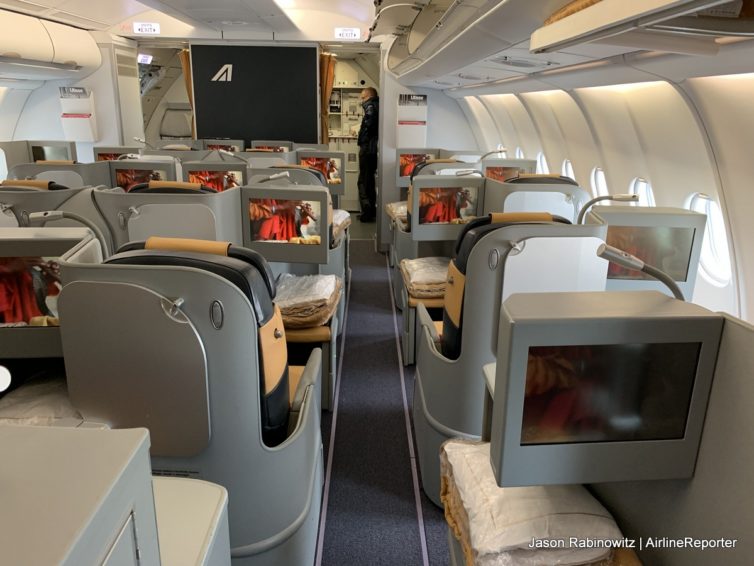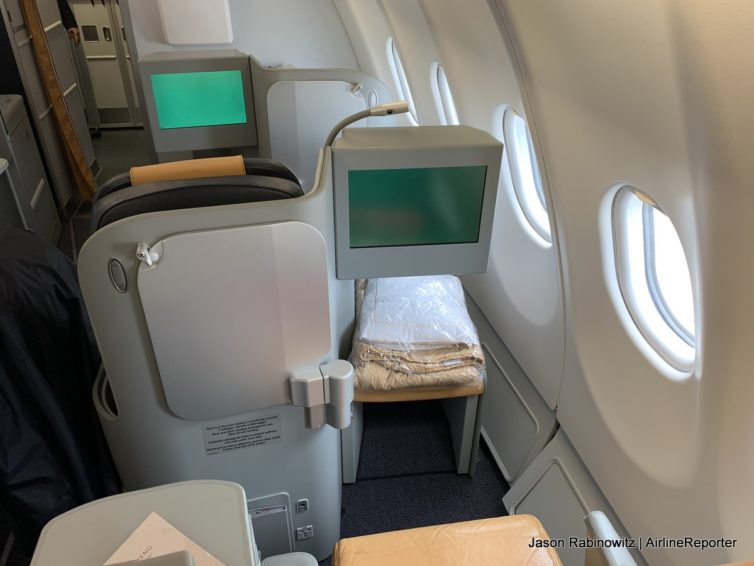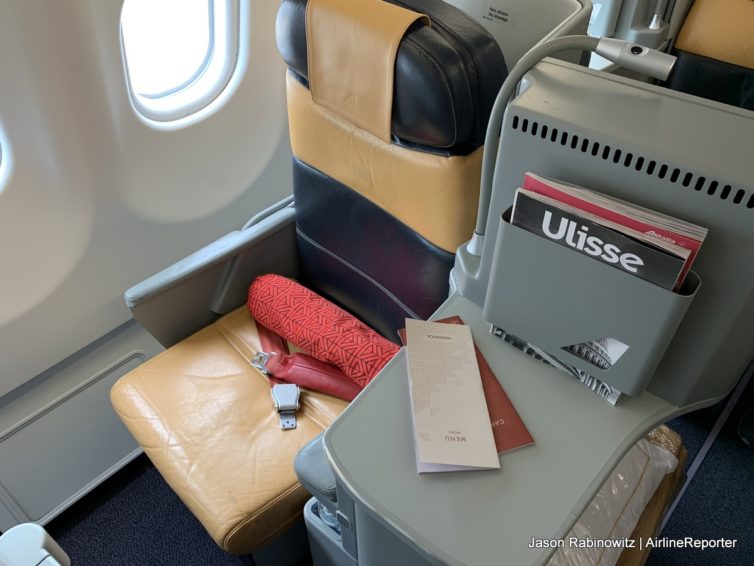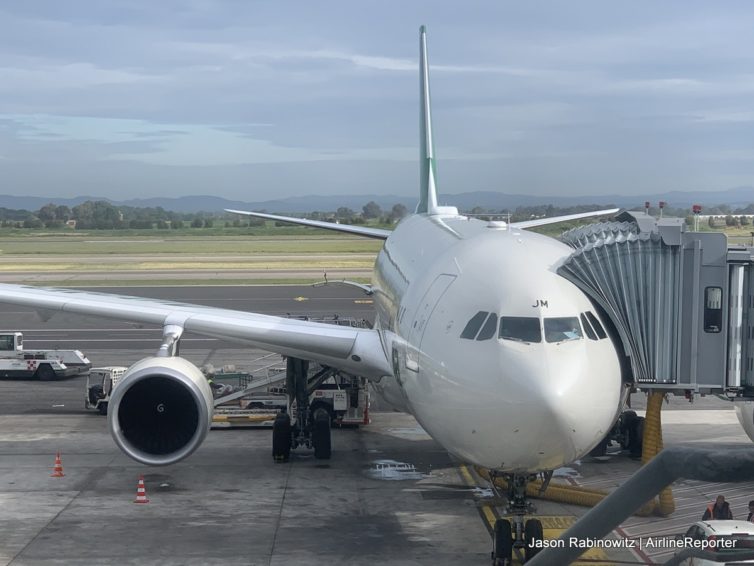
An Alitalia Airbus A330-200. Delish!
Alitalia is one of those airlines that I have always watched closely but have never had the chance to fly. While its business matters are complicated and ever evolving, Alitalia continues to run a solid operation with a highly regarded business class product and service standard. I was happy to join the airline for a flight in Magnifica Class on its newly added Dulles to Rome route, one of a small handful of new routes Alitalia has added to its map this year.
Alitalia does not have its own lounge at Dulles and instead leans on Skyteam partner Air France, but that lounge is currently under renovation so Magnifica passengers have access to the nearby Turkish Airlines lounge in the meantime. After a few lounge drinks it was time to board EI-EJL, an Airbus A330-200. Alitalia’s longhaul fleet is made up of 14 Airbus A330-200s, 11 Boeing 777-200s, and one single Boeing 777-300ER. Why does its fleet contain a single 777-300ER? Well, nobody really knows, actually.
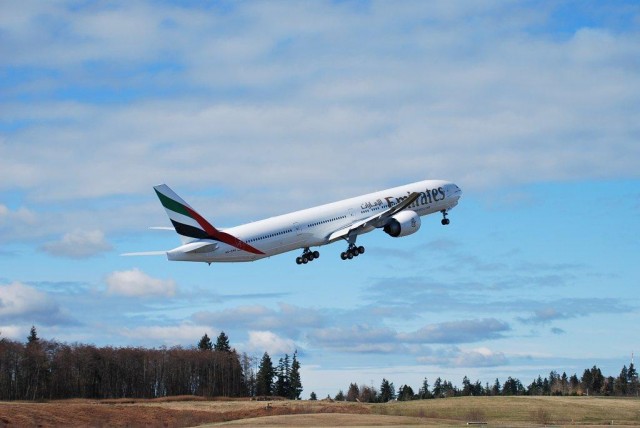
An Emirates Boeing 777-300ER – Photo: Emirates
In October of 2013, Emirates Airline became the first “Fifth Freedom” carrier to fly between New York City and Milan in Italy. This allowed a stop between New York and Dubai in the Italian city would help to increase services between not only Italy and Dubai, but also the United States and Italy.
Unfortunately, that service has barely been in operation seven months, and Emirates has come under fire from competing airlines, leading to the possible cancellation of the route.
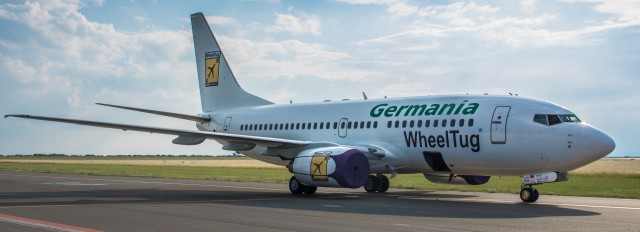
WheelTug testing at Prague Airport using a Germania 737-700 in June, 2012. Yes, it’s moving!
Courtesy: WheelTug
You may have read my recent report on the Honeywell/Safran Electric Ground Taxi System, or EGTS. But as we’ve seen countless times with many technologies, there’s rarely just one solution to a challenge. We’ve had the 707 & DC-8 duo, L-1011 & DC-10s, 737 & A320s, PCs & Macs, iThingys & Everything Else… you get the idea. Interesting, though, that the market usually settles down to 2 options. So it should be no surprise that there’s another E-Taxi system, one that takes a different approach to meeting the same objectives of saving fuel, time, and other operational costs.
Gibraltar-based WheelTug decided to figure out a way to power the nose gear in their E-Taxi solution, and not the main gear. Their reasons? Easier and quicker installation; no interference with braking and anti-skid systems; shorter cable runs to the equipment bay under the cockpit; and it’s lighter, on the single nose gear rather than two main gear. But there isn’t much space available on the nose gear and in the wheel well. To make it all work, WheelTug looked to an old idea updated with new technology – the “wheel-hub” electric motor.

